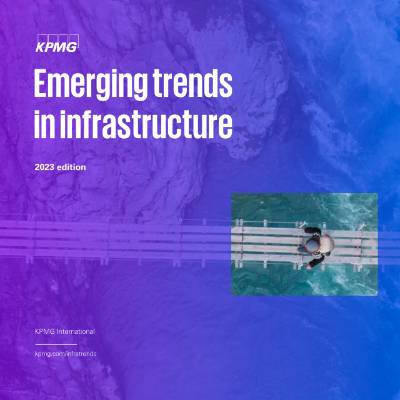At the COP27 meetings in Egypt, there seemed to be a tacit recognition that the 1.5-degree goal enshrined in the Paris Agreement had become unattainable. But that does not suggest the fight against climate change is now over. Rather, it means we now need to fight harder.
What is clear to everyone is that the timelines have shrunk. And the potential impacts of climate change are no longer someone else's problem. Outside of those who happened to live on an atoll, most people probably didn't really comprehend the big risk of slowly rising sea levels. Now they are seeing the realities of climate change on their own doorstep, manifesting as floods, hurricanes, extreme heat and cold events and drought. At the individual level, the risks of climate change have become personal, and the costs have become real. In many ways these risks allow the crisis to become real to more people.
This year, we expect to see individuals and organizations take serious steps to move from talk to action. Much focus will likely remain on mitigation (anything we can do to keep global warming and climate change to a minimum is welcome, even if humanity overshoots the 1.5-degree goal). But growing focus will likely be placed on adaptation as people come to terms with what it means to live in a climate-stressed world. There may also be multiple paths to adaptation, though some require a fundamental shift in mindset.
Much of the heavy lifting will likely fall on the shoulders of the energy and infrastructure sectors. The trick will be in coming up with approaches that help solve the trilemma of security, affordability and sustainability at pace. However, we also expect to see a significant shift in investment towards research into cleaner fuels, carbon abatement and energy efficiency. And while these, along with innovations in new green technologies like green hydrogen, should not be used as an excuse to delay action - they do still offer hope that Scope 3 emissions can be rapidly eliminated, and the 1.5-degree goal can still be salvaged.
The problem is that governments - having stated lofty goals and attended high profile conferences - have been maddeningly slow to move their feet. Simply put, the search for perfection is becoming the enemy of progress. In part, this speaks to the enormity and complexity of the task. It reflects growing concerns about the cost of the transition and who is going to fund it (see trend 7 for more on this). Government progress is also slowed by the concrete boots of an embedded cost mindset and sunk costs (as discussed in trend 9).
Our advice to governments and infrastructure players is to leave the old mindsets behind and factor sustainability into decision making now. Retrofitting using an old mindset is going to be more expensive, less effective and more disruptive. And history has proven you can't win this fight doing what you have done in the past.
This year, expect to see sustainability become more formalized as a basic pre-requisite for all new infrastructure development, with developers, owners and investors starting to think not just about financial budgets, but also about carbon allocation ones.
Now that society is backed into a corner on sustainability, people need to start thinking differently. And that means doing things smarter, quicker, better and faster.
Get in touch
Connect with us
- Find office locations kpmg.findOfficeLocations
- kpmg.emailUs
- Social media @ KPMG kpmg.socialMedia



